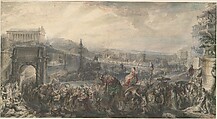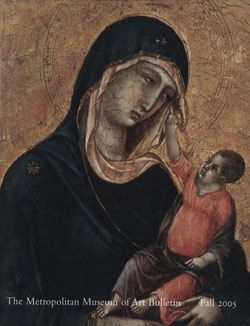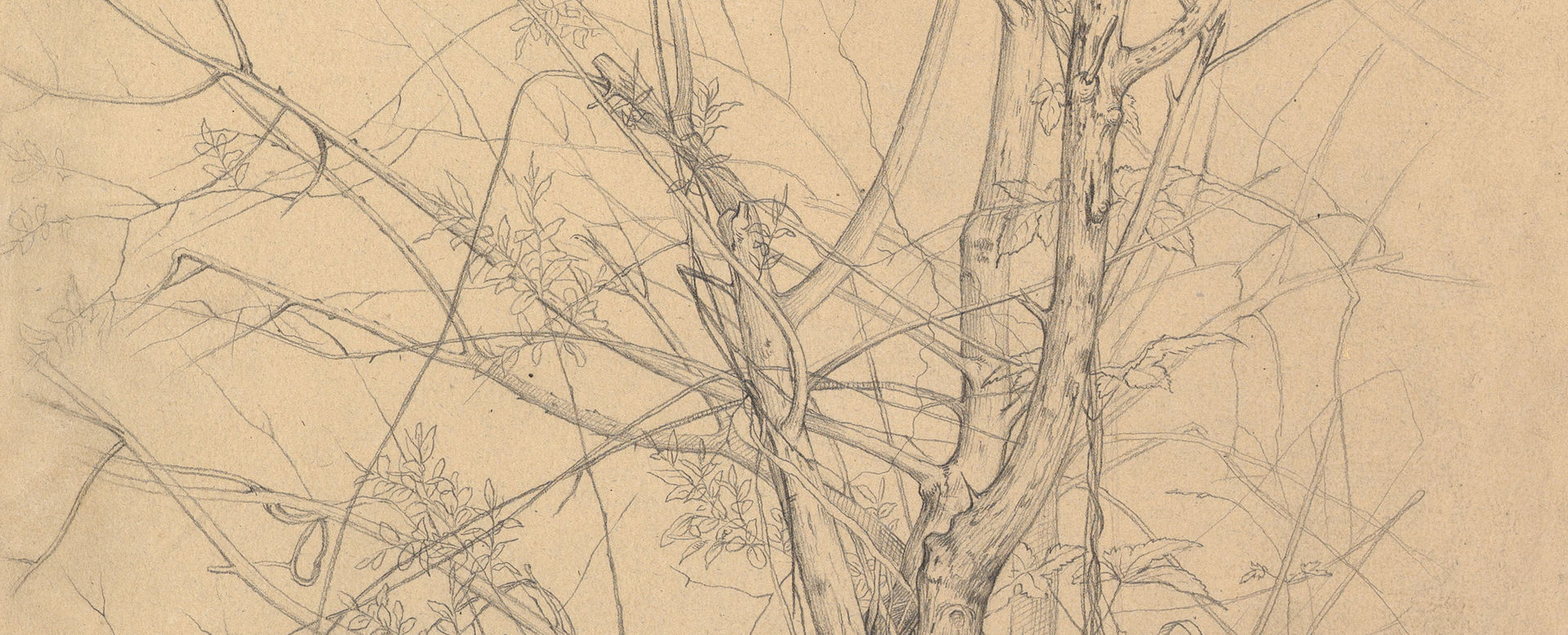The Triumph of Pompey
Gabriel de Saint-Aubin French
Not on view
An eccentric figure of unique talents, Gabriel de Saint-Aubin crafted a career for himself by piecing together various commissions and projects, focused, for the most part, on illustration and the graphic arts. His oft-cited failure to win the Académie Royale’s grand-prix and train as a history painter ultimately pushed him towards media and genres to which he was better suited. These proclivities were acknowledged by his elder brother, Charles Germain, an embroiderer to the king, who described how Gabriel, "indulged in small compositions that he crammed with erudition and details." Indeed, it was this propensity for the miniaturization of scale, combined with the expansiveness of Saint-Aubin’s vision, that made him the ideal inventor of scenes such as this one, meant to bring ancient history alive for contemporary Parisian audiences.
The Triumph of Pompey is one of Saint-Aubin’s most ambitious and fully realized works on paper. It was made as a design for a print, part of a commission from Philippe de Prétot (ca.1708-1787), an instructor in history and geography who offered classes and lessons aimed at fashionable society. The project, an illustrated survey of the history of ancient Rome entitled Le spectacle de l’histoire romaine, was first announced in 1762 when the text was published with the first twenty plates. In the 1777 edition, the number of illustrations grew to 40, which included two oversized fold-out plates based on colored drawings by Saint-Aubin: The Naval Battle near Ecnomus (J. Paul Getty Museum, Los Angeles) and the present sheet. With the exception of the Getty sheet, which makes extensive use of blue watercolor, all of Saint-Aubin’s other studies for Prétot’s book are monochrome, executed in black chalk, pen and gray wash, or both. Pompey, with its array of architectural wonders and cast of, seemingly, thousands, seems to have called for a grander treatment. Over a preliminary drawing in black chalk, the artist applied and blended layers of color, from transparent watercolor washes to more full-bodied opaque gouache. The bolder contours and details were indicated in fluid pen and ink, while finer and more delicate details were added in graphite, as revealed in the metallic sheen of the lines. Along the way, the decision must have been taken that the sheet would do double duty, both as a model for a print and as an autonomous work of art—a painting in miniature.
Saint-Aubin’s role in Prétot’s project was clearly a central one, for not only did he provide the lion’s share of the designs, but he seems to have also been very involved in the execution of the plates. For The Triumph of Pompey, he etched the entire design directly on the plate himself, essentially supplying all the detail and verve, and leaving the professional printmaker, Jean Pelletier (1736-1780), only the more pedestrian task of adding the shading, the border, and the lettering. A proof impression in the National Gallery of Art, Washington has all the hallmarks of Saint-Aubin’s free and sparkling technique with the etching needle, with every texture and tiny detail joyfully delineated. In typical fashion, he left a miniscule record of his contribution hidden in the composition, only to be obscured in the final state. In the shadows of two steps in the lower right corner of the proof impression, one can make out the lettering, "inventé et / retouché par g. de St aubin".
In accord with the purpose of a book that, according to its advertisement, sought to "instruct while amusing," Saint-Aubin conjured this engaging scene of the third triumphal entry of the general Pompey (Gnaeus Pompeius Magnus, 106-48 BC), by relying in equal parts on knowledge and invention. Motifs of ancient architecture and sculpture, familiar from Piranesi and other sources, are assembled in this imaginary view of ancient Rome in a layered configuration reminiscent of stage design. A serpentine procession featuring all manner of musicians, dancers, and soldiers winds through the city and off into the distance, aglow in the late afternoon light. The victorious Pompey is seen crowned in laurel and seated on a chariot pulled by elephants four abreast bearing the crowns of defeated kings from three continents. Captives, including a demure princess and several children, follow behind in chains. Riches are wheeled on carts and trophies borne aloft. To help contemporary readers bridge the temporal distance, Saint-Aubin has filled the foreground and the balcony above with throngs of elegant onlookers, more parisienne than Roman in affect, who clamor to view the returning hero and his glittering spoils.
This drawing of parallels between the depiction of an urban celebration in ancient Rome and the public festivities that marked life in contemporary Paris, was entirely characteristic of Saint-Aubin. He was undeniably erudite, but in his work the boundaries between the present and the past, the empirical and the abstract, became oddly permeable. It was a fluidity that allowed him to lend magic to the ordinary and use the ordinary to access the distant.
Perrin Stein, 2013
Due to rights restrictions, this image cannot be enlarged, viewed at full screen, or downloaded.






